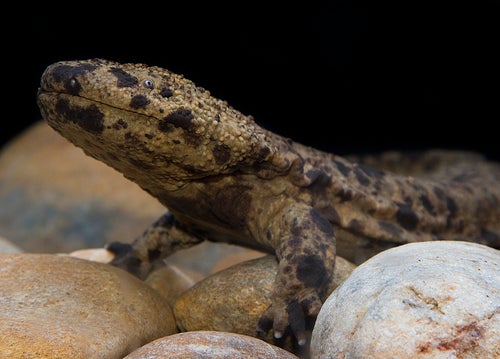Japanese Giant Salamander Dies at the Smithsonian's National Zoo
A Japanese giant salamander at the Smithsonian's National Zoo died June 6. Keepers had noticed May 25 that the 25-year-old female had been lethargic and was having difficulty maintaining buoyancy, which prompted keepers to notify the Zoo's veterinarians. Despite treatment with antifungal and antibacterial medicines, the salamander's condition did not improve, and veterinarians elected to humanely euthanize her. A final pathology report will provide more information in the coming weeks.
The salamander had lived at the Zoo's Asia Trail exhibit since her arrival in 2009, when she and four other Japanese giant salamanders were presented as a gift from the City of Hiroshima Asa Zoological Park. Japanese giant salamanders, or oosanshouo (OOH-sahn-show-uuh-ooh), are listed as near threatened by the International Union for Conservation of Nature. The gift united two cultures in an international conservation effort to study the species, which has not been bred outside of Japan in more than 100 years. In addition to salamander reproduction, Zoo scientists are studying the chytrid fungus that is found on the back of Japanese giant salamanders and appears to be specific to that species. The remaining four salamanders--two males and two females--live off-exhibit in the Reptile Discovery Center's breeding facility, which mimics the living conditions of the salamanders at the Asa Zoo.

